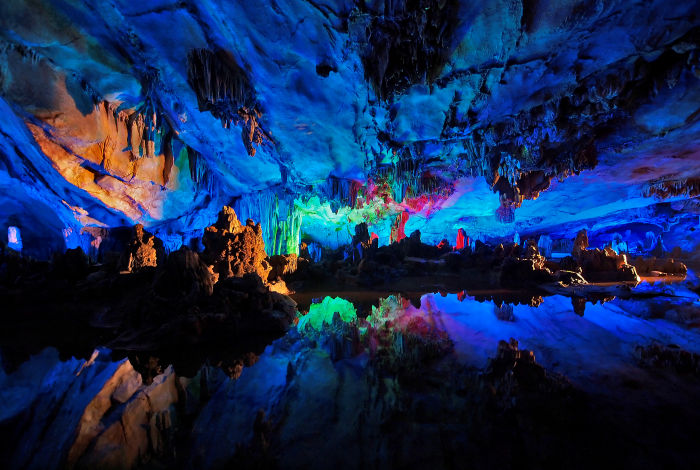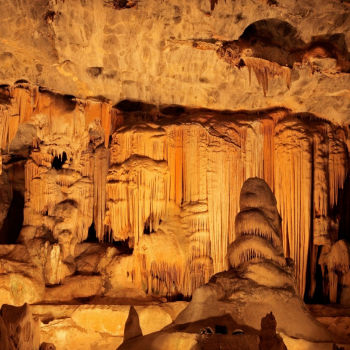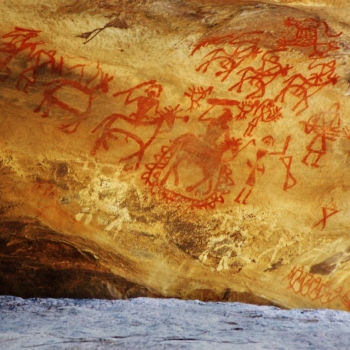
What do you think of when you hear the word “caves?” Do you picture hibernating bears, bats hanging from the ceiling, or maybe a cave man learning to use fire? Caves are more than homes for animals and prehistoric man. They are one of the most interesting landforms on Earth.
Caves, also known as caverns, are defined as large, hollow areas inside a rock or under the ground. They are classified according to how they are formed.
The four main types of caves are solution caves, lava caves, sea caves, and glacier caves. Water, volcanoes, wind and air make these caves into different shapes and sizes.
Inside a cave dripping water creates many interesting shaped and colored rock formations. You may have heard of stalactites and stalagmites, the icicle like formations that grow down from the ceiling or up from the floor of a cave. They grow very slowly, about one inch every 100 years! Stalactites and stalagmites, when they grow big enough, can eventually join to form a column. Here is an easy way to tell them apart. Stalactite has a “c” in it, which helps you to remember it grows from the ceiling. Stalagmite has a “g” in it, which helps you to remember it grows up from the ground.
Caves are located throughout the world, and not all of them have been found and explored. When caves are discovered it is important that they are protected. Their environment is fragile and can easily be destroyed.


Exploring caves is called caving, potholing or spelunking. Speleology is the scientific study of caves.
Mammoth Cave Park in Kentucky has the world’s longest cave system with over 400 explored miles.
Animal species that live all their lives deep in caves in total darkness are called troglobites. They are usually blind and colorless and could not live in the outside world.
People have used caves throughout history as shelter, for burials, and as religious sites. Ancient paintings have been found on cave walls around the world.
Some caves are still used for aging and preserving cheese and wine.
